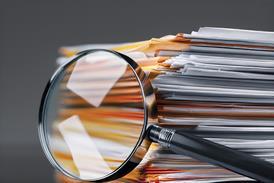Paying the price
I have received from the Land Registry its consultation paper on e-conveyancing.
In the overview it writes of the 'enormity of the project'.
It is bad, but perhaps not as bad as all that.
The Land Registry seems to have little idea of conveyancing practices in the 21st century.
Because of this, it cannot know how the current system can be improved.
It gives diagrams showing what it says are the stages followed by a conveyancer of freehold property, but they are far from up to date.
I do not ask for redemption figures twice when acting for a seller.
I have not seen a form 53 or had to deal with a life policy for years.
More often than not, the buyer's solicitor drafts the transfer and sends out requisitions before exchange.
E-conveyancing will do nothing to address the causes of delay - the indecision of buyers and/or sellers, mortgage lenders' sloth, lenders, requirements (particularly over buildings, insurance) in the Council of Mortgage Lenders' handbook and (in leasehold cases) poorly drafted leases and inadequate service charge information.
The Land Registry's ideas go too far, but there are some good ideas buried in the consultation paper.
If the Land Registry can devise a system for the instant payment of deposits, completion monies, stamp duty and Land Registry fees, that would be a great advance.
Documents should not have to be sent first to the Inland Revenue for production and stamping and then to the Land Registry for registration.
Lenders should be made to remove their charges from the charges register once they have received their money.
Desmond Banks, Desmond Banks & Co, London


























No comments yet